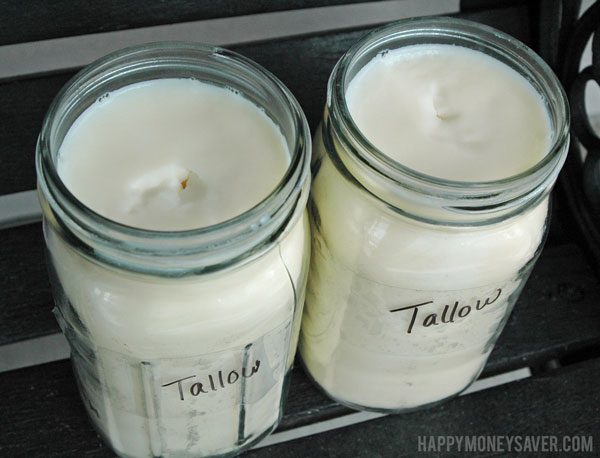
For today’s Happy Homesteading post we are going back in history to learn the long-lost skill of rendering beef tallow fat like many pioneers made & used. Beef tallow was used in cooking as it makes an amazing oil for frying or pastries. They would also use tallow fat for candle making, soap making, moisturizing, keeping cast iron pots from rusting and even for waterproofing leather.
What is Tallow?
“Tallow is the rendered fat of cows, sheep, and other ruminant animals such as deer. It is very solid and waxy at room temperature and can be kept for extended periods without the need for refrigeration. Rendering is the process of gently heating the interior fat tissue, called “suet,” causing the pure oils to melt away from the rest of the tissue.” (Source)Tallow is solid at room temperature, with a texture harder and more waxy than shortening. In fact tallow and lard are rendered the same way, but lard is pig fat slowly melted down and is softer like shortening.
Beef Tallow is a Healthy Fat
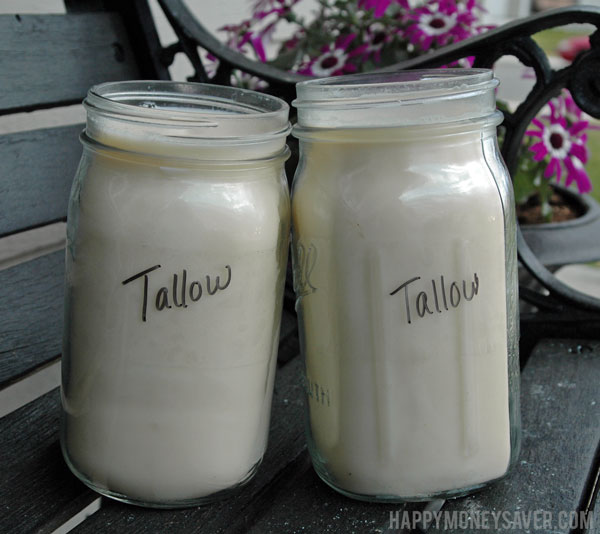
Tallow is the healthy fat that sadly got pushed off the shelves once vegetable oils came around.
Before doing this homesteading series I had honestly never heard of tallow. And when I asked my friends and family about this I just got weird looks. Isn’t it amazing how something that was basically a staple in homes a hundred or two years ago has seemingly been lost or forgotten? After researching I found that beef tallow is actually a very healthy fat full of vitamins and is actually better for you than some of the hydrogenated oils we buy at the stores.
“Tallow is an excellent source of niacin, vitamins B6, B12, K2, selenium, iron, phosphorus, potassium and riboflavin. Grass Fed beef tallow contains high ratio of conjugated linoleic acid (CLA) which is a cancer-resistant agent. Contrary to the popular conception, tallow is good for health as tallow fat is similar to the fat/muscles in the heart. Recent studies have shown that human beings need at least 50% of saturated fats like tallow and lard to keep the heart pumping hale and healthy. Tallow from pasture-raised cows also contains a small amount of Vitamin D, similar to lard. It is also a good source of K2 in its suet form.” (Source)Making Tallow
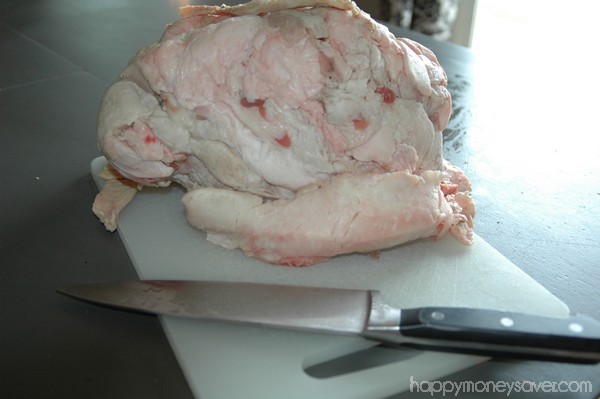
First thing you need is some beef fat. I found a nice local butcher shop, called them up and asked if they had any beef fat. Lucky for me they did and it was only $.67 per lb too. For the nicest and healthiest tallow try to get beef fat from right around the kidneys and preferably from a grass-fed cow. I didn’t ask the butcher at the time I purchased it if this was a grass-fed cow or not, I think I was in shock that I actually found beef fat and that it was so inexpensive. But next time I will ask for sure.
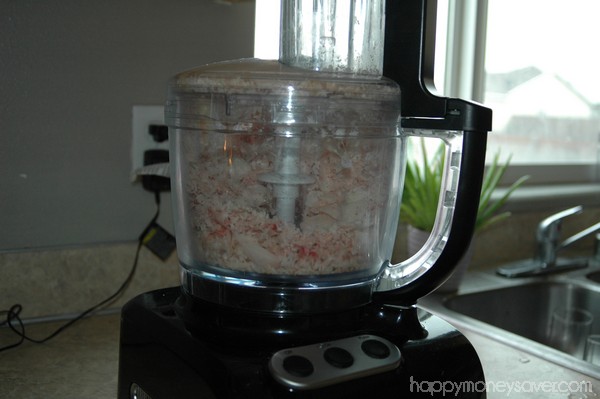
The beef fat I purchased was frozen, so I let it thaw enough that it was still hard but not frozen solid so I could use my food processor to grate it up. If you don’t have a food processor just use a knife and cut the fat into as small of chunks as you can. If there are any pieces of meat you can cut out do it at this stage too.
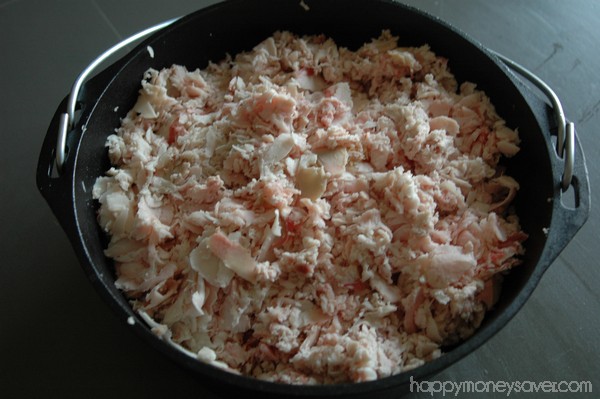
Here is all my beef fat put into my 5 qt. Dutch Oven I purchased. I think there is about 4 lbs of beef fat in there. I filled my pan to the top.
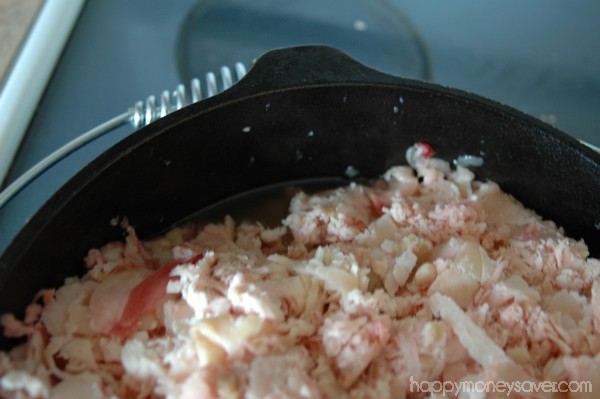
With the heat on low I put the lid on the beef tallow fat and let it start slowly cooking. Here is how it looked after 1 hour. If you had only 1 lb of fat it would look a lot more melted at this stage, but since I have 4 lbs, it is slowly cooking from the bottom.
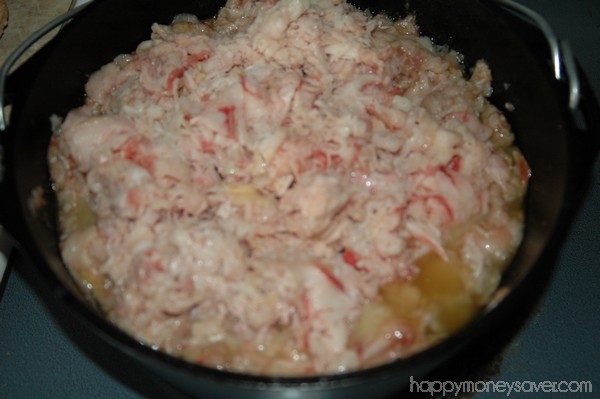
Here it is again after 2 hours. A little more rendered. At this point I took a wooden spoon and mixed the beef tallow fat around a bit. Some people like to take a potato masher and squish it a bit too to help the process along. You don’t want to cook this fast because if it burns it will ruin it all.
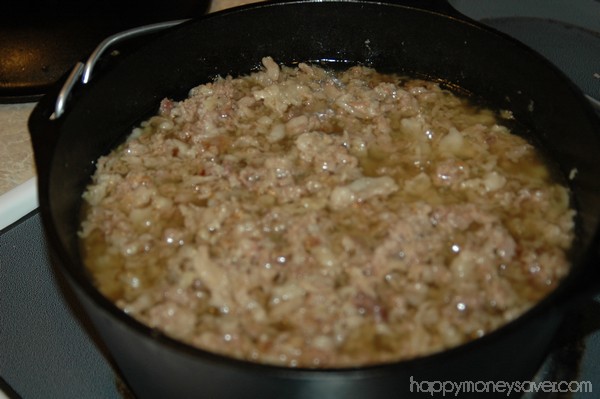
Now its been 4 hours and my house is REALLY starting to smell bad like well..FAT and STINKY OIL. YUCK.

I opened up every window and turned on fans. I can’t stress to you enough how horrible this smelled. At this stage I was just wanting this whole process to be over. I am not kidding. I spent most of the day upstairs just so I couldn’t smell it as much. Then when I did have to go downstairs I actually gagged once from the smell. I am such a baby, aren’t I… 🙂
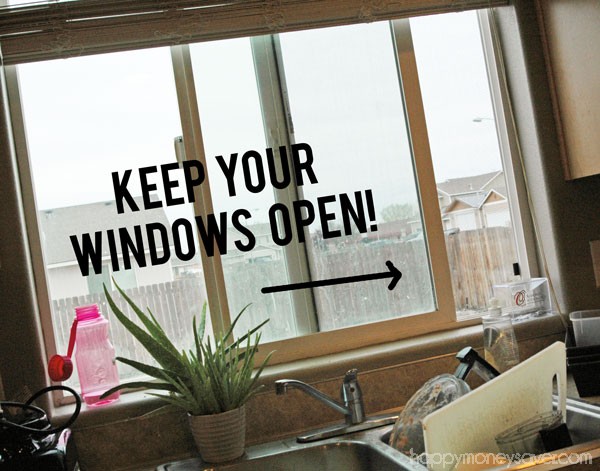
After about 6-7 hours it was all done. You can tell by all the little browned bits cooked till crispy. The Pioneers called these the cracklin’s. They are basically fried bits of meat and grisle. They would sprinkle a little salt on the cracklins and once cool eat them up. I shuddered at the thought after smelling the fat cooking in the air. I actually lost my appetite with the smell in the air.
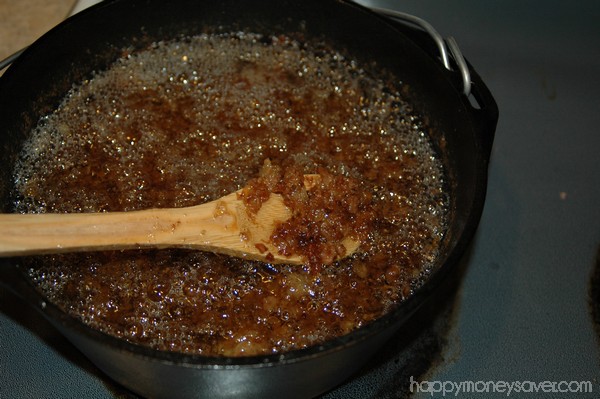
Next is the time to drain all the liquid oil and strain out the cracklin’s. You can use a fine mesh strainer, a paper towel, cheese cloth or what I used: a flour sack towel. I lined the towel over a strainer, which sat over a large bowl.

Then I poured all the hot oil in and strained it. Use oven mitts here, and remember to be safe. This is REALLY HOT oil and can burn you if you are not careful.
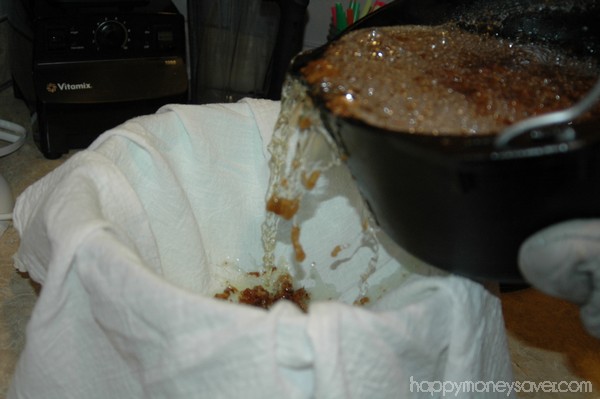
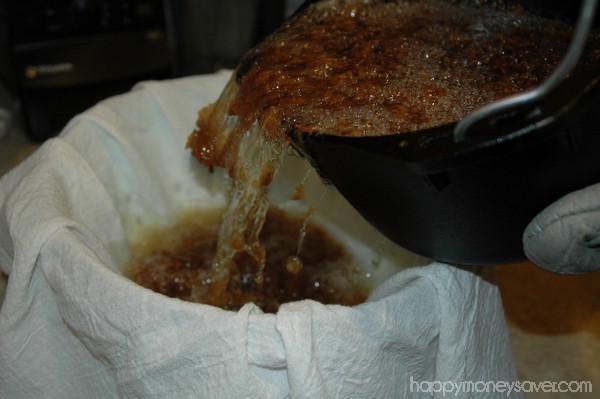

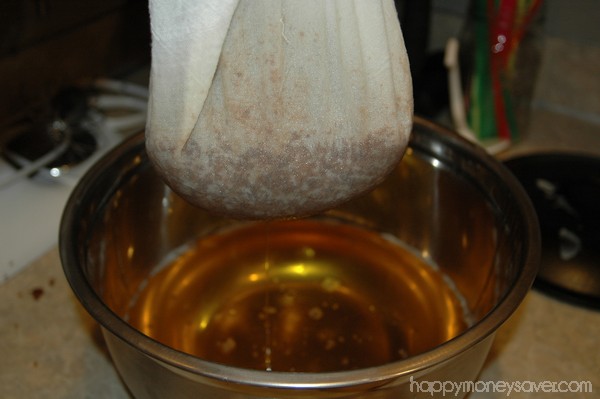
Look at all that lovely yellow liquid tallow left behind after the straining.

It should be a nice yellow color.
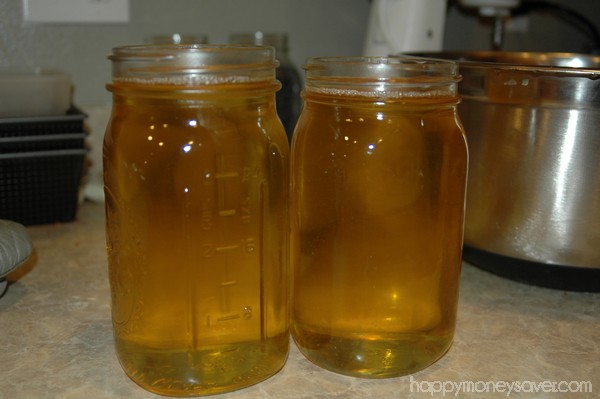
I poured mine into wide mouth glass jars for storage. Then I let it cool all night.
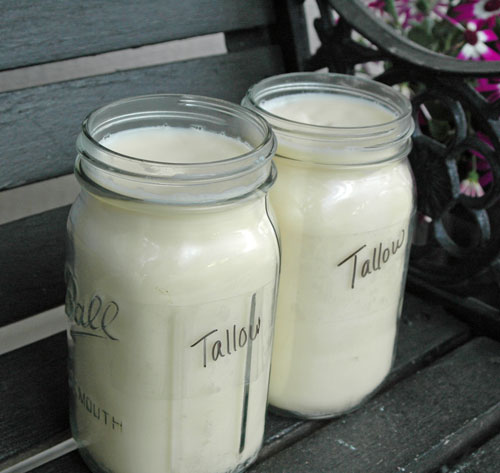
And it turned hard and waxy and white. Isn’t it beautiful??
It was even more beautiful after I deep cleaned my whole kitchen, using vinegar to get the nasty smell out. 😉

Storing Tallow
Beef Tallow is wonderful because as long as you store it in an air-tight container to avoid oxidization it can be at room temperature for up to a year or longer. I have mine in my fridge as it will last even longer there. OR you can pour your tallow fat into ice cube trays and put the frozen cubes into a freezer bag to freeze.
Tallow Soap & Tallow Candles
As many of you might know I made my own homemade soap for the first time last month using a recipe of lye and a variety of store bought oils. I love the soap I made, but I wanted to make soap like the Pioneers and settlers did from long ago using beef tallow. I have heard that homemade tallow soap made from rendering beef tallow is the very best type of soap. It’s strong, its hard and it suds nicely. And I would like to use my own tallow soap instead of using Fels Naptha in my Homemade Laundry Soap recipe as well. So check back, I will be making tallow soap from scratch very soon! Plus I think it might be neat to try to make Tallow candles as well.
So what do you think? Do you have questions? Think this is weird? Please leave a comment with your thoughts!

Ingredients
- Beef Fat preferably from a grass-fed cow and try to get the fat that is from right around the kidneys
Instructions
- Use food processor to grate it up or if you don’t have a food processor just use a knife and cut the fat into as small of chunks as you can.
- If there are any pieces of meat you can cut out do it at this stage too.
- Put beef fat into 5 qt. Dutch Oven, fill pan to the top.
- With the heat on low put the lid on the beef tallow fat and let it start slowly cooking.
- After 2 hours take a wooden spoon and mix the beef tallow fat around a bit. Some use a potato masher and squish it a bit too to help the process along.
- Don’t cook this fast because if it burns it will ruin it all.
- Stir again at about 4 hours.
- After about 6-7 hours it will be done. You can tell by all the little browned bits cooked till crispy.
- Next drain all the liquid oil and strain out the cracklin’s. (Cracklins are basically fried bits of meat and gristle)
- Use a fine mesh strainer, a paper towel, cheese cloth or a flour sack towel and line the towel over a strainer, which should sit over a large bowl.
- Pour all the hot oil in and strain it. It should be a nice yellow color.
- Pour into airtight containers and allow to cool overnight.
- Store it in an air-tight container to avoid oxidization it can be at room temperature for up to a year or longer. You can store it in the fridge as it will last even longer there. OR you can pour your tallow fat into ice cube trays and put the frozen cubes into a freezer bag to freeze.




Comments & Reviews
Laura Zarbonj says
The reason you got the bad smell I side, it was never cooked inside. They used the big black cast iron pots. The gross crackling you referred to, were way over cooked. You remove them once they turn a light tan color. Lye (hardwood ashes) was added to tallow to make soap. Strips of muslin left from clothes making were twisted and dipped in tallow to make candle wicks.
Michelle says
Thanks for posting. I did not see a recommended temperature setting. Did I miss it?
Opinion02122 says
How much fat does it take to make a gallon of tallow?
Paoletta De Filippis says
Hi,
I overcooked my tallow, it’s darker than usual and not snow white. It also has a burnt smell to it. Just wondering if this would be still good for soap or if I should toss it out?
Thanks – p
Karrie says
Oh, hmmm…. I’m not exactly sure! Since it is a chemical change that happens…I wonder…? You could try it? Sorry, I wish I was more help.
Kundalini says
I think there must have been something wrong with your beef fat. I render tallow on a regular basis and it never has a bad smell. I do it in my oven at 225 degrees for about 24 hours and it has never smelled like anything other than tasty fatty meat. I have an extremely sensitive nose and I am chemically sensitive, so any “off” smells really bother me. I get my beef fat from a farmer who raises and sells 100% grass fed shares of beef. I receive it frozen and I partially thaw it just before rendering it.
The reason I rated this recipe so low is because I am worried that people reading this might get the wrong idea that it is okay or normal for the rendering process of beef tallow to smell bad. I believe it is a sign that something has gone awry.
Timothy B Wager says
I put 4 lbs. of suet in my crockpot and put on my back deck this morning on the lowest setting. It is not 5pm and i forgot to cut it up so after rereading your blog, as someone suggested here, i took a pair of scissors and “scissored” it to bits. Then i took a whisk to it. It smells sooo good…..like when Mom used to make a huge pot roast on Sundays growing up.
Kundalini, i smell all meats, the only reason i am doing the rendering is for candles for camping. I rarely eat meat and if it smelled funky, into the dumpster it would have gone. Blogger might have a sensitive sense of smell. I would like to believe that ANY adult would smell meat, and like the old saying goes: “When in doubt, throw it out”!
Linda Kattuah says
I’m not sure if anyone mentioned this, but you can use the tallow as the binder when making bird suet cakes. They won’t eat the store bought anymore.
Christine says
I’ve been really enjoying your blog, which takes me back to my days of reading Little House on the Prairie and its relatives. However, seeing you handle things like lye and hot tallow, I want to share something. I am an optician and a blind rehabilitation therapist, and am always nagging people to wear safety glasses. In my work, I have seen some horrible, tragic eye injuries that could have been prevented by proper safety glasses that can be had for less than twenty dollars at the hardware store. Sporting goods stores also sell safety shields. They should be made of polycarbonate, and be large enough to cover the whole eye area. Side shields are available on some types. None of us expects to have an accident, but none of my patients anticipated a lifetime of blindness. It is truly heartbreaking to see. End of rant. I have subscribed to your blog, and looking forward to more of your ideas, and will probably try some. I’m considering the dishwasher detergent tablets.
Karrie says
Thanks, you are right, I need to be more careful I’m sure! (hanging head in shame…) hee hee.
Debbie says
So I made some of this and it looked about the same color as yours but it smells a little burnt. I am wondering if I burnt it or over cooked it and if it is still good to eat.
Mary says
Hi, I just wanted to let you know that today I made some beef tallow, I fallowed your dirrections. My house dint stink up though, or it maybe that I ont mind the smell.
Anyway thank you so so much, its sitting in a tall jar and turning a lovely white. I am going to use it as a skin conditioner. ?
Lynn McDowell says
Also, I have a pint of pure beef fat from simmering beef and bones for 48 hours. Would that be considered usable as tallow?
Karrie says
Yes, I would think so! Just make sure you dont have any residue of broth or it could go rancid faster.
Alice Klatt says
Hi! Found your site three weeks ago. I was looking for how to render. All I remembered from the past was my mother-in-law rendering lard, was going to call her when I went to my laptop, there you were. Thank you. we had just had two grass fed beef butchered for the winter, got out the fat, ground it in my meat grinder, cooked it while my pregnant daughter-in-law was gone, but found out that there was no awful smell :)! Hope you have found some grass fed fat that cooks like mine did. Turned out great, but I only made a small first batch, so gotta do it soon again. Thank you. Alice (I grew up in Milwaukee!) We are running 185 cows, began with 65.
Debbie says
I just reserved my tallow from making bone broth. To get the residue off of it, would it work for me to now just melt the tallow and pour it through a filtering cloth? Would that be enough to clean it?
Lynn McDowell says
I’m curious as to whether you tried to make body butter with your tallow. I’ve heard it absorbs into the skin much better than coconut oil. based body butters.
Gia Jacobson says
Absolutely! It makes a lovely creamy body butter, I mixed mine with equal parts Shea butter and a bit of olive oil and a few drops of lavender oil. Melted down, cooled until almost solid and whipped in my stand mixer and it’s wonderful. Use it anywhere you’d use lotion.
Margarett says
I recently rendered tallow from a grass-fed steer we split with our farmer friend. I used the crockpot method, also. My experience was almost exactly like yours, even down to the smell putting me off eating the cracklin’s. I like pork rinds, so I was excited to try the fresh, home made cracklin’s. I just couldn’t get past the smell. The finished product only has a slight odor, and is good for cooking eggs. I want to try my hand at soap making. I am going to make lye using wood ashes from our wood stove.
Judy says
Interesting thread. I stumbled into the whole tallow question by accident a couple of days ago For years I have made a beef/barley/split pea soup that is a family tradition. Usually make it once or twice a winter. (Although I love it, it’s a fair amount of work, even with a pressure cooker, and I’m not an enthusiastic cook.) I always toss a lot of fat after refrigerating the soup. The pots and especially the plastic refrigerator containers are quitegreasy, too. But the smells are my lovely soup smell, with vegetables and dill.
This time I used only three big marrow bone piecess with almost no meat on them. Any meat or gristle was rendered lovely and edible by the cooking. I skimmed the fat with one of those ittle tools that let the fat come up through holes, leaving the soup mostly behind, then put the hot fat in a jar in the fridge. Got most of it that way, and most of the rest off the top of the refrigerated soup later.
Long story shorter, I was at the same time fussing over my winter-dried skin and looking at ingredients in lotions, etc., looking at what is used that has natural origins and is not petroleum based. At the same time I noticed that the hardened fat from skimming the soup was a lovely white (it was light yellow before it cooled) and it felt WONDERFUL on my hands. No as yellow as it usually is, and almost no odor at all. Perhaps the fat in the marrow (which this was) is very pure – the marrow itself stayed in the soup, but it always generates lots of fat on top. But I usually use some meat, too – this time I didn’t./
Eureka! I had just looked at Google for the lotion ingredients, and I was reminded of the word “tallow.” I melted it in a little pan with raw shea butter I brought back from a trip, beeswax, coconut oil, olive oil, and, just as an experiment, a little bit of solid (waxy) perfume that I like a lot.
It came out great. I needed to remelt to adjust the amount of beeswax so it wouldn’t be either too hard or too soft. Unfortunately, I didn’t measure carefuy, but probably about equal amounts of the various ingredients by volume to start, chilling some for a test, and then adjusting the beeswax. And just a tiny bit of the perfume – it would be fine not to use any.
Thanks for a great site!
Sandy Steele says
Love your site! I am definitely going to try this out in a crockpot outside I think. However the pork rendering sounds like it may be ok with smell. I can go with a bacon smell although it will make everyone hungry! I am interested in cooking with it. I use a commercial brand lard to make pie crusts with. Lard makes pie crusts so much better tasting and flakier! I am looking forward to trying this, however I too am a bit concerned with chemicals in the lard from medicines and stuff in the feed from the animal. So I need to make sure what pork or beef fat I get is chemical free. Great site!
Happy.MoneySaver says
Thanks! Glad you like it!
Brigitte says
Hi, I just found this site, looking for information on rendering beef fat. Actually it’s the same as rendering pork fat which I have done. So, thank you.
I have a question: after rendering the tallow out, can I pour it into canning jars and process it in my pressure cooker to keep for a long time? Like say, 4-5 yrs.?
Happy.MoneySaver says
I am not sure but I like where you are going with that. If you find out let me know.
Tish says
I have a friend who made her own tallow-based soap and while it was lovely and smelled great, after using it a while, it caused my husband and I to both stink by the end of the day. I use all vegetable/olive oil when I make my soap.
Genna says
Hi Ferna,
I also render from animals i have raised and my neighbor. We are careful about their feed.
I use all the fat I can get and I don’t chop it up. We just slaughtered 2 sheep, too much to chop. I render outside in large pots.
Have you rendered from sheep or goats? If you have, how was the aroma? I think they will always stink.
Feb 2015, we will have our biggest render yet, 3 cows. PHEW!! Hopefully we have a caldron by then. Anyway, just wondering how it smells for you.
Thanks for a great sight Karrie.
Paula says
Hi. I enjoyed your tutorial and I was wondering how much tallow did you get from the four pounds of fat? I’ve just started making my own soap and, living in France, there are a million butchers so I can get fat very inexpensively if not for free. Thanks for the info!!
melissa says
Another way to obtain tallow that is basically free…when you fry ground beef, say you drippings…once you have enough, you can clean the tallow thru boiling with water and then separating after it cools…it smells a little but nothing like rendering from scratch, and it is utilizing a waste many ppl throw away
Kate says
How much water to ground beef fat do you use? Also, how do you store it? I cook about 2 lb of ground beef at a time, which yields about 4 Tbs of fat — would storing it in the freezer be okay until I have a larger amount?
Amber says
Hi! I have to say I love this site! It is so nice to see there are people like me out there in the USA. I grew up in Arkansas and moved to California. People here cannot understand even the idea of growing herbs in the window. But I grew up understanding that these skills, although not always needed, are very important. People here think I am nuts because I make my own bread when I have a grocery store across the street from me.
A friend came by not long ago and ate real butter I made for the first time. Even though she loved it, she didn’t even know butter could be made at home.
I hope nobody round you thinks you are nuts! I have no clue where you live (just found your site last night) but in Southern California, it is a different world!